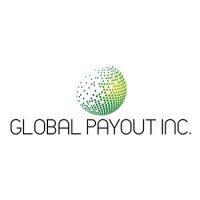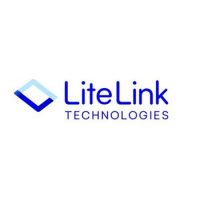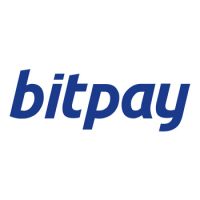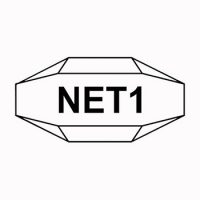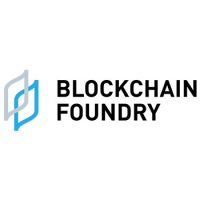Blockchain
Blocks & Headlines: Today in Blockchain – February 18, 2025: Featuring Bitcoin, Wyoming Treasury, Jamaica, Tether, HyperLiquid, and New York Crypto Task Force

In the ever-evolving landscape of blockchain and cryptocurrency, every day brings a fresh wave of innovation, regulatory debates, strategic partnerships, and transformative visions. Today, on February 18, 2025, we dive deep into a spectrum of stories that not only reveal the pulse of the blockchain world but also shape the future of digital finance, Web3, DeFi, and NFTs. From thought-provoking opinions on Bitcoin’s role in addressing national debt to pioneering stable token initiatives in Wyoming, from transformative visions in Jamaica that fuse blockchain with cybersecurity to groundbreaking collaborations between Tether and Guinea driving digital transformation, the stories today are as multifaceted as they are consequential. We also explore HyperLiquid’s bold launch of HyperEVM to supercharge blockchain programmability and conclude with a call for deeper regulatory insight as a New York senator proposes a dedicated task force to study the crypto and blockchain impact.
This comprehensive briefing is designed to offer you a well-rounded, opinion-driven analysis of today’s major developments in blockchain and cryptocurrency. Whether you’re an investor, developer, policymaker, or enthusiast, the trends highlighted in this article underscore both the disruptive potential and the formidable challenges facing the industry. Let’s unpack these stories, examine their implications, and understand how they collectively signal the future trajectory of blockchain technology and the broader crypto ecosystem.
Bitcoin’s Role in the National Debt Debate: A Critical Look at Kinzinger’s Perspective
The first headline of the day comes with a provocative assertion: according to an exclusive statement by Congressman Kinzinger, Bitcoin is “no debt solution.” (Source: Crypto.News) This commentary, which challenges the long-held notion that Bitcoin might serve as a hedge against national debt or monetary instability, demands a deeper look into both the technical realities and ideological underpinnings of digital currencies.
The Debate Unfolds
For years, Bitcoin has been touted by some as a potential alternative to traditional fiat systems—a digital gold that could, in theory, offer a safe haven from the pitfalls of national debt and inflation. However, Kinzinger’s perspective forces us to re-examine these assumptions. In his view, Bitcoin’s inherent volatility, its decentralized yet unregulated nature, and its current utility primarily as a speculative asset disqualify it from serving as a viable long-term solution for sovereign debt issues.
This argument is not without merit. Bitcoin’s price fluctuations have been extreme, and while these swings create profit opportunities for traders, they also undermine its reliability as a stable store of value—a crucial characteristic for any currency considered for national financial management. Moreover, the lack of a central regulatory authority means that Bitcoin operates outside the conventional frameworks that allow governments to manage economic policy and debt repayment.
Implications for Investors and Policymakers
From an investor’s standpoint, Kinzinger’s comments serve as a cautionary tale. While Bitcoin remains a key asset in diversified crypto portfolios, its role should perhaps be viewed through a lens of speculative investment rather than as a bedrock of national financial stability. For policymakers, this perspective reinforces the need for clearer regulatory guidelines that address both the risks and opportunities posed by cryptocurrencies. It may also spark debates about whether the digital currency revolution should be integrated into national financial systems or remain a decentralized experiment for the technologically inclined.
In an era where discussions around national debt and fiscal responsibility are more intense than ever, such opinions invite a broader conversation about the role of digital assets in macroeconomic policy. The takeaway here is clear: while Bitcoin continues to break new ground in terms of technology and market dynamics, its suitability as a tool for addressing national debt is, at best, questionable. This is a critical juncture for both traditional financial institutions and blockchain innovators as they navigate the fine line between disruptive technology and economic pragmatism.
Wyoming’s Bold Initiative: Advancing Blockchain with Stable Token Innovation
Turning our focus to regulatory innovation, a new report from Cointelegraph highlights a significant development from the state of Wyoming. The Wyoming Treasury has taken a decisive step forward by appointing a Blockchain Stable Token Commission Director, signaling the state’s intent to lead in the arena of blockchain-driven financial innovation. (Source: Cointelegraph)
Pioneering a New Financial Paradigm
Wyoming has long been recognized as a friendly jurisdiction for blockchain and cryptocurrency ventures. This latest initiative reinforces the state’s commitment to creating an environment where digital assets can thrive under a framework that encourages both innovation and accountability. The introduction of a dedicated stable token commission director is a strategic move aimed at ensuring that stablecoins—cryptocurrencies pegged to traditional assets like the US dollar—are developed, managed, and regulated in a way that fosters stability and trust.
Stablecoins are increasingly seen as the bridge between the volatile world of cryptocurrencies and the stability required for everyday financial transactions. By embracing this technology, Wyoming is positioning itself as a pioneer in the creation of a secure, regulatory-compliant ecosystem that could serve as a model for other states and countries. This initiative has the potential to attract significant investment, stimulate economic growth, and encourage further innovations in both blockchain technology and digital finance.
Regulatory Challenges and Future Prospects
However, the road ahead is not without challenges. Regulatory oversight of stablecoins remains a contentious issue globally, with debates centering on transparency, reserve backing, and systemic risk. Wyoming’s proactive approach, through the appointment of a dedicated director, could help mitigate these concerns by ensuring robust regulatory frameworks that balance innovation with consumer protection.
For the broader blockchain community, this development is a signal that regulatory bodies are evolving in tandem with technological advancements. It also highlights the critical role that stablecoins are likely to play in the future of decentralized finance (DeFi) and Web3 applications. As more jurisdictions look to emulate Wyoming’s model, the dialogue between regulators and innovators will be crucial in determining how blockchain technologies are integrated into the traditional financial system.
Transformative Visions in Jamaica: Blockchain and Cybersecurity Unite
In a compelling opinion piece featured in the Jamaica Gleaner, Odayne Haughton explores how blockchain and cybersecurity can fundamentally transform Jamaica’s digital landscape. (Source: Jamaica Gleaner) This narrative is not just about technological adoption—it’s a call to reimagine national infrastructure, economic development, and public trust in an increasingly digital world.
A Vision for a Digital Jamaica
Jamaica, like many emerging economies, faces unique challenges in harnessing the benefits of digital innovation. With cybersecurity threats on the rise and digital fraud becoming a pressing concern, the integration of blockchain technology presents an unprecedented opportunity to build a more secure and transparent digital ecosystem. Haughton argues that by adopting blockchain solutions, Jamaica can not only enhance its cybersecurity posture but also stimulate economic growth through improved financial inclusion, streamlined government services, and increased investor confidence.
This vision is both ambitious and timely. For Jamaica, the convergence of blockchain and cybersecurity offers a dual advantage: it provides a technological solution to pressing security challenges while also laying the groundwork for a robust digital economy. In a world where digital trust is paramount, blockchain’s inherent features—such as immutability, transparency, and decentralization—could play a pivotal role in transforming public services and fostering a more resilient national infrastructure.
Implications for Emerging Markets
The potential impact of this transformative vision extends well beyond Jamaica’s borders. For many emerging markets, the promise of blockchain technology lies in its ability to bypass traditional financial and administrative bottlenecks, offering a decentralized alternative that empowers citizens and stimulates economic activity. Haughton’s analysis serves as an inspiring blueprint for how nations can leverage blockchain to overcome systemic challenges and build a future where technology and governance work in harmony.
The success of such initiatives will depend on robust policy support, public-private partnerships, and a concerted effort to educate the broader population about the benefits and limitations of blockchain. As governments and businesses in emerging markets increasingly recognize the transformative potential of digital technologies, Jamaica’s experiment could very well serve as a case study for successful digital transformation.
Tether and Guinea: A Partnership for Digital Transformation
In another groundbreaking development, Cryptoninjas reports that Tether, one of the world’s leading stablecoins, has teamed up with Guinea to explore blockchain technology and drive digital transformation. (Source: CryptoNinjas) This strategic partnership underscores the expanding role of blockchain in fostering economic development and financial inclusion, particularly in regions that have historically been underserved by traditional financial systems.
Bridging the Digital Divide
Tether’s collaboration with Guinea represents a significant step toward bridging the digital divide in emerging economies. By leveraging Tether’s expertise in stablecoin technology, Guinea aims to build a more inclusive financial ecosystem that can offer secure, low-cost transactions to its citizens. This partnership is poised to drive the adoption of blockchain technology in a region where traditional banking infrastructure may be lacking, thereby enabling a broader segment of the population to participate in the digital economy.
The initiative is expected to have far-reaching implications. Not only does it promise to enhance financial inclusion, but it also has the potential to spur innovation in areas such as remittances, microfinance, and cross-border trade. By providing a stable, digital currency that is accessible to all, Tether and Guinea are setting the stage for a new era of economic empowerment—one that harnesses the power of blockchain to create more resilient and equitable financial systems.
Economic and Social Impact
From an economic perspective, the Tether-Guinea partnership could serve as a catalyst for broader digital transformation across the region. As blockchain-based solutions take root, local businesses may find new avenues for growth and innovation, while consumers benefit from reduced transaction costs and improved financial services. Socially, the initiative holds the promise of fostering greater trust in digital financial systems—a critical factor in encouraging widespread adoption and long-term sustainability.
Critically, this partnership also highlights the importance of international collaboration in the blockchain space. As digital currencies and blockchain technologies transcend national borders, partnerships like these illustrate how cross-border cooperation can drive meaningful progress, even in regions facing significant developmental challenges. For policymakers and industry leaders, the lesson is clear: embracing blockchain technology can unlock substantial economic and social benefits, provided that it is implemented thoughtfully and inclusively.
HyperLiquid’s HyperEVM: Supercharging Blockchain Programmability
Innovation in blockchain programmability is taking center stage with HyperLiquid’s launch of HyperEVM, a new initiative aimed at boosting the capabilities of blockchain-based applications. (Source: Coinspeaker) In an increasingly competitive ecosystem where scalability, interoperability, and advanced smart contract functionality are paramount, HyperLiquid’s HyperEVM represents a bold leap forward.
Enhancing the Developer Ecosystem
HyperEVM is designed to expand the programmability of blockchain platforms by providing developers with a more versatile and efficient environment for creating decentralized applications (dApps). With the growing complexity of Web3 projects, the need for enhanced programmability has never been greater. HyperEVM promises to deliver improved transaction speeds, lower gas fees, and increased interoperability across different blockchain networks—all of which are critical for fostering a thriving ecosystem for DeFi, NFTs, and other blockchain-powered innovations.
By streamlining the development process and offering a more robust infrastructure for smart contracts, HyperLiquid is addressing one of the core challenges facing blockchain adoption. Developers are often hampered by the limitations of existing platforms, which can stifle innovation and impede the mass adoption of blockchain technology. HyperEVM aims to overcome these barriers, creating a more dynamic and responsive environment that encourages experimentation and rapid iteration.
Implications for the Broader Crypto Ecosystem
The launch of HyperEVM has significant implications for the broader crypto ecosystem. Enhanced programmability not only paves the way for more sophisticated dApps but also strengthens the overall security and efficiency of blockchain networks. In a space where technological advancements are a key differentiator, innovations like HyperEVM can help position blockchain platforms as viable alternatives to traditional centralized systems.
Moreover, HyperLiquid’s initiative is a testament to the growing convergence of technology and finance. As blockchain continues to mature, the demand for platforms that can support increasingly complex applications will only intensify. HyperEVM represents a critical step in this evolution, offering a glimpse into a future where blockchain programmability is not a constraint but a catalyst for transformative change across industries.
New York Senator Proposes Crypto Task Force: A Call for Deeper Regulatory Insight
In a move that underscores the increasing intersection of technology and public policy, CryptotvPlus reports that a New York senator has proposed the creation of a dedicated task force to study the impact of crypto and blockchain technologies on the economy and society. (Source: CryptoTVPlus) This proposal comes at a time when governments around the world are grappling with how to regulate the rapidly evolving digital asset space.
The Need for Informed Regulation
The call for a crypto task force represents a recognition that the transformative potential of blockchain technology extends far beyond mere financial speculation. As digital assets and blockchain applications become more deeply embedded in the fabric of everyday life—from financial services and supply chain management to identity verification and beyond—there is a pressing need for policymakers to fully understand their implications. The proposed task force would serve as a dedicated forum for gathering insights from industry experts, academics, and other stakeholders, with the goal of crafting informed, balanced regulatory frameworks.
From a regulatory perspective, the creation of such a task force could help bridge the gap between the fast-paced innovation of the blockchain space and the slower-moving processes of traditional policymaking. By fostering ongoing dialogue between legislators and industry leaders, this initiative has the potential to create a more adaptive regulatory environment—one that not only protects consumers and maintains market integrity but also nurtures innovation.
Broader Implications for the Blockchain Ecosystem
For the blockchain and cryptocurrency community, the senator’s proposal is a double-edged sword. On one hand, increased regulatory scrutiny may introduce new challenges and compliance requirements. On the other hand, well-crafted regulations can provide much-needed legitimacy and stability to the industry, encouraging broader adoption and investment. A formal task force dedicated to studying these technologies could also facilitate a more nuanced understanding of how blockchain can be harnessed for social and economic good.
In the long run, this initiative signals a maturation of the blockchain ecosystem. It acknowledges that while innovation is essential, it must be balanced by thoughtful governance. For investors, developers, and entrepreneurs, the establishment of clear regulatory guidelines could reduce uncertainty and pave the way for more sustainable growth in the digital economy.
Synthesis and Key Takeaways: Navigating a Dynamic Blockchain Landscape
As we reflect on today’s array of blockchain and cryptocurrency developments, several overarching themes emerge that are poised to define the future of this dynamic industry.
Embracing Innovation While Managing Risk
From Kinzinger’s critical perspective on Bitcoin as a debt solution to Wyoming’s proactive regulatory measures, today’s news highlights the delicate balance between innovation and risk management. The blockchain ecosystem is evolving at breakneck speed, and while technological breakthroughs like HyperEVM and transformative partnerships such as Tether with Guinea herald new opportunities, they also underscore the inherent challenges of volatility, regulatory uncertainty, and technological maturity.
The Role of Strategic Partnerships
The stories emerging from Jamaica and Guinea illustrate the power of strategic partnerships in driving digital transformation. Whether it’s leveraging blockchain to enhance cybersecurity and economic growth in emerging markets or collaborating on stablecoin initiatives to bridge the digital divide, partnerships are proving to be critical in accelerating adoption and realizing the full potential of blockchain technology.
The Imperative of Regulatory Clarity
The call for a dedicated crypto task force in New York and Wyoming’s initiative to regulate stable tokens both point to the urgent need for clear, balanced, and forward-looking regulatory frameworks. As governments and policymakers strive to understand and harness the transformative potential of blockchain, informed regulation will be key to fostering an environment where innovation can flourish while protecting the interests of consumers and investors alike.
Future Trends in Blockchain and Crypto
Looking ahead, the blockchain landscape is set to be shaped by continued technological innovation, deeper regulatory integration, and an expanding array of use cases that span finance, governance, and beyond. The convergence of blockchain with other emerging technologies—such as AI, quantum computing, and IoT—will open up new frontiers for decentralized applications and smart contract functionality, further blurring the lines between traditional industries and digital innovation.
Conclusion: Charting the Future of Blockchain and Cryptocurrency
Today’s blockchain and cryptocurrency news not only reflects the rapid pace of innovation but also emphasizes the need for thoughtful analysis and strategic planning in an increasingly interconnected digital world. The debates over Bitcoin’s role in national debt management, Wyoming’s bold regulatory initiatives, transformative visions for countries like Jamaica, groundbreaking partnerships such as that between Tether and Guinea, and technological breakthroughs like HyperLiquid’s HyperEVM—all converge to paint a picture of an industry at the crossroads of disruptive innovation and practical implementation.
For investors, developers, policymakers, and enthusiasts alike, the key takeaway is clear: while blockchain technology offers immense potential for reshaping industries and empowering individuals, its future success depends on our collective ability to balance innovation with regulation, risk with opportunity, and ambition with accountability. The evolution of blockchain is not just a technological phenomenon; it is a socio-economic transformation that requires collaboration, foresight, and a commitment to building a digital ecosystem that is both robust and inclusive.
As we navigate this dynamic landscape, let us remember that each news story, each partnership, and each regulatory initiative is a piece of a larger puzzle—one that, when put together, will define the next chapter of the digital revolution. Whether you are a seasoned investor or a curious observer, today’s developments remind us that the journey of blockchain and cryptocurrency is one of continuous learning, adaptation, and boundless potential.
Thank you for joining us on this in-depth exploration of the day’s most significant blockchain and cryptocurrency developments. Stay tuned to “Blocks & Headlines” as we continue to bring you the latest insights, expert opinions, and trend analyses that matter most in the world of blockchain. Together, we can chart a course toward a more secure, innovative, and transformative digital future.
The post Blocks & Headlines: Today in Blockchain – February 18, 2025: Featuring Bitcoin, Wyoming Treasury, Jamaica, Tether, HyperLiquid, and New York Crypto Task Force appeared first on News, Events, Advertising Options.
Blockchain
EAT & BEYOND ANNOUNCES PROPOSED NAME CHANGE AND UPDATED INVESTMENT POLICY
Blockchain
Blocks & Headlines: Today in Blockchain – May 30, 2025 (Fraser Edwards, Kyiv NFT, Spirit Blockchain Capital, Indian eHealth, Hedera)

Blockchain technology and cryptocurrencies continue to redefine industries—from competitive gaming and cultural heritage preservation to corporate finance, healthcare, and alternative tokens. Today’s briefing highlights five pivotal developments shaping the ecosystem: Fraser Edwards’s vision for trust in eSports; Ukraine’s wartime cultural preservation via NFTs; Spirit Blockchain Capital’s Q1 2025 operational report; India’s push for blockchain-enabled electronic health records (EHRs); and the rise of viral altcoins such as UniLabs, Sui, and Hedera Hashgraph. Together, these stories illustrate the themes of trust and identity, preservation and provenance, institutional maturation, public-sector innovation, and token diversification. In this op-ed–style round-up, we distill the essence of each story, cite sources, and offer analysis on how they advance Web3, DeFi, and NFT frontiers.
1. Rebuilding Trust in eSports: Can Blockchain Fix Competitive Integrity?
Source: CCN
Summary:
In a recent CCN interview, veteran trader and eSports investor Fraser Edwards argues that blockchain’s immutable ledgers can restore credibility in the rapidly commercializing world of competitive gaming. According to Edwards, match-fixing scandals and opaque prize-pool distributions have eroded fan confidence. By tokenizing tournament entries and payouts on public blockchains—complete with smart-contract–enforced escrow—organizers can guarantee that prize monies are distributed exactly as advertised, and that no post-match manipulation occurs. Tournament operators in Asia and North America are already piloting Ethereum-based payout dApps, aiming to increase transparency for players and sponsors alike.
Key details & analysis:
-
Smart-contract escrow: Funds are held in a time-locked contract that releases prize money only upon verifiable match results. This prevents disputes over referee decisions or delayed payments.
-
On-chain reputation: Player and team reputations can be tokenized via non-fungible reputation badges that accrue based on fair play and community votes—discouraging cheating.
-
Scalability concerns: High-traffic tournaments may require Layer 2 rollups or alternative chains (e.g., Polygon, Immutable X) to reduce gas costs and latency.
Opinion: Blockchain’s dual promise of provable fairness and programmable finance makes it uniquely suited to eSports. Yet adoption hinges on UX: seamless wallet integrations, minimal transaction fees, and clear regulatory guidance on esports tokens.
2. When Art Meets Blockchain: Ukraine’s Wartime Cultural Preservation
Source: The Kyiv Independent
Summary:
As monuments crumble under artillery fire, Ukrainian curators and technologists are partnering to mint NFTs representing lost or endangered artifacts. The Kyiv Independent reports that the National Art Museum of Ukraine has launched “Project Phoenix,” tokenizing high-resolution 3D scans of sculptures, manuscripts, and paintings. Proceeds from initial sales fund restoration and digital archiving efforts. Each NFT embeds provenance metadata—including GPS coordinates, curator notes, and condition reports—ensuring that future generations can verify authenticity and context, even if the physical artifact is destroyed.
Key details & analysis:
-
Metadata richness: Beyond simple ownership, NFTs store structured metadata—using ERC-721 metadata extensions—that capture curatorial insights and conservation logs.
-
Decentralized archives: IPFS and Arweave are employed to host ultra-high-resolution imagery, with on-chain hashes guaranteeing data integrity.
-
Community engagement: Fractional-NFT drops allow diaspora communities to collectively own tokens, strengthening cultural ties and crowdfunding preservation.
Opinion: Blockchain’s ability to immutable record heritage provides a lifeline for war-torn nations. However, ensuring that local institutions retain governance over metadata edits and future migrations is critical to avoiding “cultural colonialism” by global NFT marketplaces.
3. Spirit Blockchain Capital’s Q1 2025 Highlights: Growth, Investments, and Outlook
Source: GlobeNewswire
Summary:
Spirit Blockchain Capital’s Q1 2025 report benchmarks the firm’s operational milestones and financial performance. Assets under management (AUM) climbed 45% to $1.02 billion, driven by strategic allocations to top-tier Layer 1 and Layer 2 protocols, DeFi liquidity pools, and a newly launched token-index fund. Operating income rose 37%, fueled by management fees and performance incentives. The firm also closed its second blockchain-focused venture fund at $150 million, earmarked for early-stage Web3 projects in gaming, infrastructure, and decentralized identity.
Key details & analysis:
-
Diversification strategy: 60% of AUM in blue-chip cryptocurrencies (Bitcoin, Ethereum); 25% in DeFi (Aave, Uniswap, Lido); 15% in tokenized commodities and NFTs.
-
Fund performance: The flagship fund delivered a 9.8% return in Q1, outperforming the 6.2% benchmark set by the Bloomberg Galaxy Crypto Index.
-
Venture investments: Early stakes in zero-knowledge proof startups and decentralized storage platforms signal confidence in scalability and privacy innovations.
Opinion: Spirit’s robust growth and disciplined diversification mirror institutional maturation in the blockchain asset management space. As regulatory clarity improves, expect further inflows from endowments, pensions, and family offices.
4. Blockchain EHRs in India: The Next Digital Health Revolution
Source: ORF
Summary:
The Observer Research Foundation (ORF) details India’s pioneering pilot of blockchain-backed electronic health records (EHRs) in the state of Andhra Pradesh. By leveraging a permissioned Hyperledger Fabric network, the initiative ensures that patient records—from vaccination histories to diagnostic imaging—are securely shared across hospitals, clinics, and pharmacies. Patients control access via digital identities anchored to India’s Aadhaar system, granting temporal permissions for data viewing and preventing unauthorized sharing.
Key details & analysis:
-
Interoperability: HL7 FHIR standards are mapped to on-chain transactions, enabling seamless data exchange with existing hospital information systems (HIS).
-
Privacy safeguards: Off-chain storage of PHI (Protected Health Information) is encrypted with patient-held keys; only hashed pointers reside on-chain to ensure immutability without exposing sensitive data.
-
Regulatory alignment: The pilot aligns with India’s draft Digital Health Act, which emphasizes data sovereignty and patient consent frameworks.
Opinion: Blockchain EHRs can democratize healthcare access in a populous nation—but success depends on user-friendly portals, robust identity verification, and contingency plans for network outages in rural areas.
5. The Hottest Viral Altcoins of 2025: UniLabs, Sui, and Hedera Lead the Pack
Source: TronWeekly
Summary:
According to TronWeekly, the altcoin landscape in 2025 is dominated by three viral tokens: UniLabs (UNI-L), Sui (SUI), and Hedera Hashgraph (HBAR). UniLabs, a governance token for a decentralized laboratory network, saw a 1,200% year-to-date surge on news of its AI-driven drug-discovery partnership. Sui’s Move-based smart-contract platform gained traction for sub-second finality and low gas fees, with total value locked (TVL) surpassing $2 billion. Hedera’s HBAR continues its enterprise pivot, securing multi-year agreements with global brands for identity verification and supply-chain tracking.
Key details & analysis:
-
UniLabs use case: Token holders vote on research grants and share in royalty revenues from patented compounds developed on-chain.
-
Sui performance: With a novel object model and horizontal sharding, Sui supports over 3,000 TPS (transactions per second) without compromising on decentralization.
-
Hedera enterprise: The Governing Council—comprising Boeing, Google, and LG—bolsters confidence in HBAR’s governance model and paves the way for compliant enterprise deployments.
Opinion: These tokens exemplify the diversification of blockchain applications. Investors should assess not only market hype but also protocol fundamentals—developer activity, economic incentives, and real-world adoption.
Cross-Story Trends & Key Takeaways
-
Trust & Transparency at the Core
From esports prize-pool ledgers to wartime NFT archives and permissioned health records, blockchain’s immutability fosters verifiable trust—a prerequisite for mainstream adoption across sectors. -
Institutional & Public-Sector Innovation
Spirit Blockchain Capital’s fund growth and India’s EHR pilot signal that both private and government entities view blockchain as a strategic infrastructure, not just speculative assets. -
Vertical Specialization Fuels Token Growth
Viral altcoins like UniLabs, Sui, and Hedera thrive by addressing niche use-cases—governance in biotech, scalable DeFi rails, and enterprise identity—underscoring the importance of purpose-built protocols. -
Metadata & Provenance Drive NFTs Beyond Art
Ukraine’s cultural NFTs demonstrate how rich on-chain metadata can preserve heritage, while esports applications show that reputation tokens can enforce fair-play credentials. -
Ecosystem Maturation Requires UX & Governance
Across all stories, user experience—wallet onboarding, identity verification, metadata curation—and robust governance frameworks (tokenomics, regulatory alignment) emerge as decisive factors in blockchain’s next wave.
Conclusion
Today’s blockchain headlines reveal a maturing ecosystem where trust, transparency, and targeted innovation unlock new frontiers—from safeguarding digital heritage amid conflict to revolutionizing healthcare and sports. As institutional players allocate billions, and public-sector pilots chart regulatory pathways, the fate of tomorrow’s Web3 landscape hinges on seamless UX, rigorous governance, and demonstrable real-world utility. Stay tuned for tomorrow’s Blocks & Headlines, where we’ll continue tracking the trends, tokens, and technologies that define the blockchain revolution.
The post Blocks & Headlines: Today in Blockchain – May 30, 2025 (Fraser Edwards, Kyiv NFT, Spirit Blockchain Capital, Indian eHealth, Hedera) appeared first on News, Events, Advertising Options.
Blockchain
Kyrgyz Republic to launch USDKG, a gold-backed stablecoin pegged to the U.S. Dollar, in Q3 2025

USDKG
-

 Blockchain Press Releases3 days ago
Blockchain Press Releases3 days agoRain Expands Support to Solana, Tron, and Stellar, Enabling More Partners to Launch Stablecoin-powered Card Programs
-

 Blockchain Press Releases3 days ago
Blockchain Press Releases3 days agoBybit Secures MiCAR License in Austria, Opens European Headquarters in Vienna with Strategic Expansion Plan
-

 Blockchain Press Releases6 days ago
Blockchain Press Releases6 days agoFlipster Reveals Middle East Expansion Plans and Appoints Regional Leadership to Bolster Crypto Trading
-

 Blockchain3 days ago
Blockchain3 days agoBlocks & Headlines: Today in Blockchain – May 29, 2025 (Vaulta, Fosun, Signing Day Sports, Credit Unions, Gaming Innovations)
-

 Blockchain Press Releases6 days ago
Blockchain Press Releases6 days agoCoinW Teams Up with Superteam Europe to Conclude Solana Hackathon and Accelerate Web3 Innovation in Europe
-

 Blockchain5 days ago
Blockchain5 days agoBlocks & Headlines: Today in Blockchain – May 27, 2025 Featuring Blockchain.com, Bilal Bin Saqib, XRP Ledger, Unstoppable Domains, ReNEW, MEXC Ventures
-

 Blockchain6 days ago
Blockchain6 days agoBlocks & Headlines: Today in Blockchain – May 26, 2025 (Lightchain AI, Cetus Hack, Bilal Bin Saqib, The Blockchain Group)
-

 Blockchain Press Releases7 days ago
Blockchain Press Releases7 days agoAB Charity Foundation X AB Blockchain Join Forces to Advance the Global “Tech for Good” Mission






